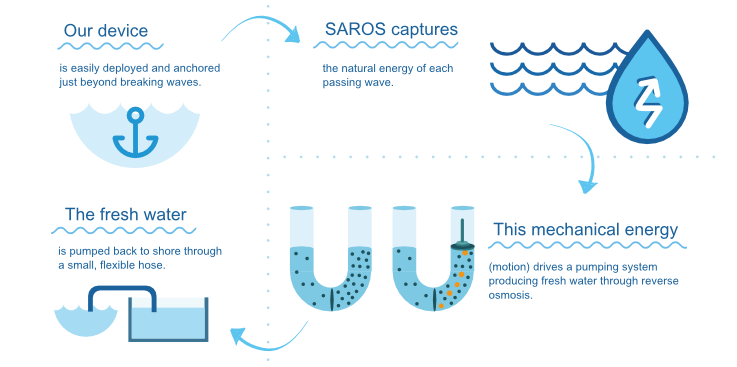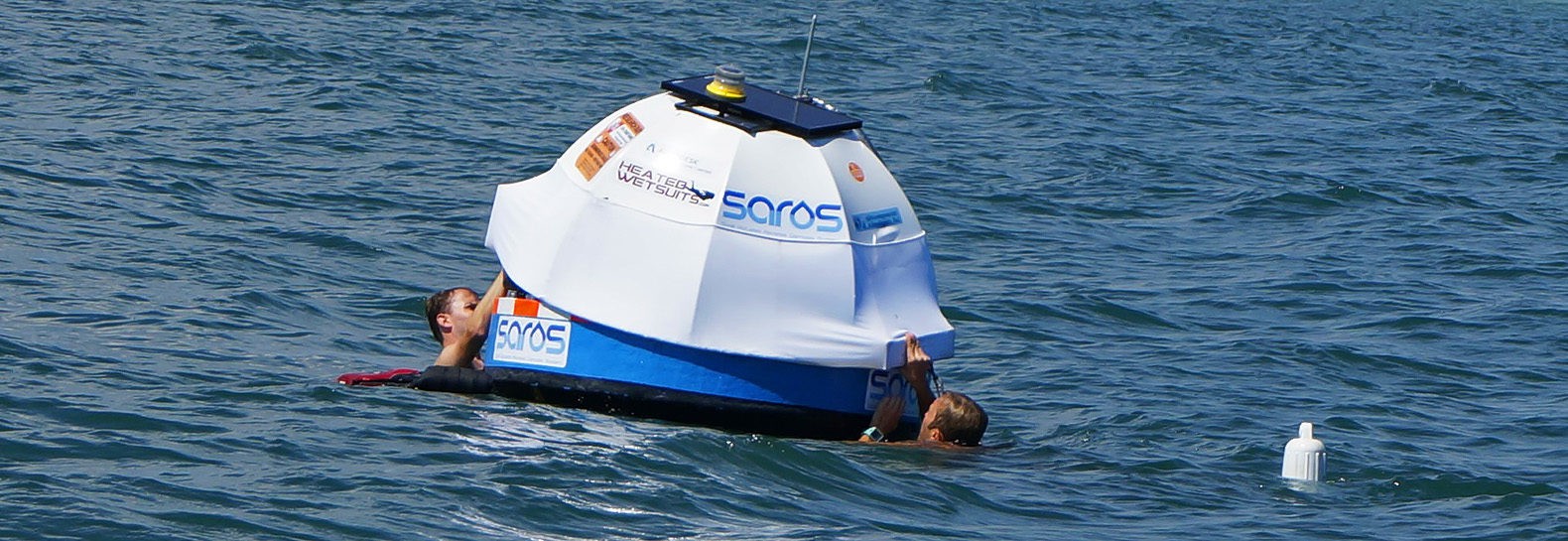Turning waves into freshwater is one of the technological solutions that can help solve water crises. Water crises has been identified by the World Economic Forum as the top global risk to industry and society over the next decade. There are now over 633 million people without access to fresh water.
The Problem
A large part of the water scarcity issue is occurring around islands and coastal regions, with 233 million people living in these areas and experiencing water shortage conditions. In addition, many other areas are in search of a sustainable water solution. Existing desalination plants devour huge amounts of energy and belch out concentrated brine into oceans, jeopardizing marine ecosystems.
Current desalination efforts trend toward large-scale plants or pump technologies requiring electricity and/or fossil fuels and many regions rely on imported water, exposing them to high costs and market volatility.
The Tech Solution: Turning Waves into Freshwater
A new device could create drinking water from the sea using wave power. The SAROS desalination buoy is the brainchild of two graduates from the US University of North Carolina. Their device pressurizes and performs reverse osmosis to purify brine. It currently produces 500 gallons a day.

They’re now scaling up to produce 5,000 gallons per buoy in waves that are only 2.5 feet high. A US demonstration project will be in place by early-2017 with pilot projects in Puerto Rico and Nicaragua towards the middle of next year. It could one day provide clean drinking water for remote islands.
SAROS targets these areas where typical solutions are unfeasible or undesirable and a small scale, efficient technology is needed.
With this technology, the economic advantages of an increased water supply do not come at the cost of environmental harm or prohibitively expensive and complicated systems. SAROS produces no emissions and minimal salt brine concentration, drastically reducing the environmental impact of desalination.
SAROS provides a consistent supply of new, fresh water, rather than reusing current water reserve and brings desalination to areas that otherwise lacked access. By removing the dependency of outside resources, communities will be able to focus on other day to day tasks.






